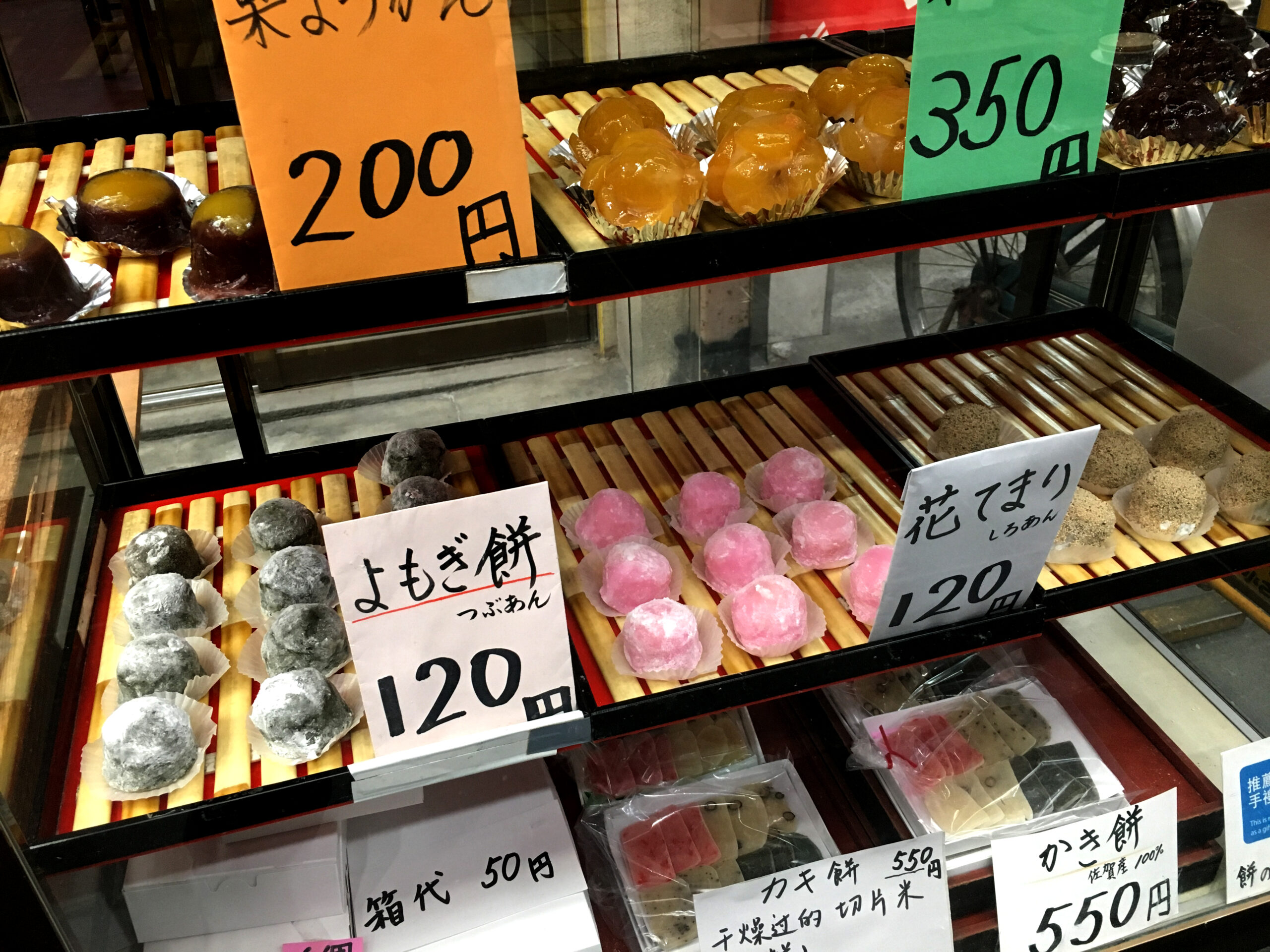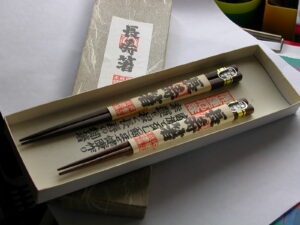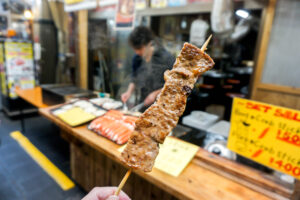In the bustling streets of Japan, where neon lights flicker and the sound of trains fills the air, the konbini (convenience store) stands as an emblem of modern life. These small yet remarkably versatile shops can be found on almost every corner, offering everything from everyday essentials to gourmet meals. The ubiquity of konbini reflects not only their convenience but also their role as cultural touchstones in Japanese society. This article serves as a comprehensive guide for anyone looking to explore the fascinating world of konbini—unpacking their history, cultural significance, offerings, and more.
A Brief History of Convenience Stores in Japan
The origin of convenience stores in Japan can be traced back to the 1970s, when the first modern konbini, called "Seven-Eleven," opened in Tokyo. Inspired by American convenience store models, Japanese entrepreneurs quickly adapted the concept to suit local tastes and preferences. By the late 1980s, the convenience store format began to gain traction, leading to an explosion of chains and franchises across the country.
In the decades that followed, konbini evolved rapidly, incorporating advanced logistics and supply chain strategies that allowed for an inventory refresh rate unlike any other. This innovation positioned them as vital components of urban life, catering to a population constantly on the move. By the 1990s, konbini had solidified themselves as a staple of daily life in Japan, expanding their reach into smaller towns and rural areas.
The appeal of konbini transcends mere convenience; they became cultural fixtures, often serving as community hubs where people gather or stop by for a quick chat. Their growth paralleled societal changes, including increased work hours and a shift towards a more fast-paced lifestyle. Today, Japan boasts over 50,000 konbini, a testament to their significance in contemporary Japanese life.
As they have evolved, many konbini have diversified their offerings to include not just food and drinks but also banking services, postal services, and ticket sales. This multifaceted approach has allowed them to remain relevant amid changing consumer demands. Now, they are seen not just as shops but as essential components of the social fabric of Japanese communities.
In recent years, the rise of online shopping and delivery services has posed challenges for konbini, yet they have adeptly adapted by enhancing their consumer experience. The ability to provide instant gratification remains a key selling point, making konbini indispensable for busy city dwellers.
The history of konbini in Japan underscores a journey of adaptation and innovation. From modest beginnings to a complex network of services, these convenience stores have become a defining feature of the Japanese lifestyle.
Why Konbini Are More Than Just Shops: A Cultural Phenomenon
Konbini serve as more than just retail outlets; they encapsulate various aspects of Japanese culture and social interaction. They are designed to accommodate the fast-paced lifestyle of many Japanese citizens, providing a quick and efficient shopping experience. In urban areas where space is limited and time is of the essence, konbini emerge as essential stops in daily routines.
Moreover, the social aspect of konbini cannot be understated. They often act as informal meeting points where friends can catch up over a quick snack or colleagues can grab lunch together. The comfortable and inviting atmosphere encourages people to linger, fostering community connections that extend beyond mere transactions.
The concept of "omotenashi," or Japanese hospitality, is vividly illustrated in the service provided at konbini. Employees are trained to offer exceptional customer service, ensuring that patrons feel welcomed and valued. This attention to detail builds trust and loyalty among customers, making konbini an integral part of the community.
Konbini also respond to and reflect societal trends. For example, the rise in health consciousness among consumers has led many stores to expand their selections of nutritious and organic products. Similarly, the growing interest in sustainability has prompted konbini to adopt more eco-friendly practices, from reducing plastic usage to sourcing local ingredients.
Another cultural impact of konbini is their role in the representation of Japanese pop culture. Many konbini feature exclusive merchandise or themed products that appeal to fans of anime, manga, and other media forms. This intersection of consumerism and entertainment creates a unique shopping experience that resonates with a wide demographic.
Overall, konbini symbolize the adaptability and resilience of Japanese culture. They encapsulate the need for convenience while fostering community ties, making them a compelling cultural phenomenon that transcends traditional retail.
What to Expect: Inside the World of Japanese Convenience Stores
Stepping inside a konbini is an experience in itself. The organized layout and bright fluorescent lighting create an inviting space, making it easy for customers to navigate the aisles. Each store usually has a similar structure, featuring sections for snacks, drinks, fresh food, and daily necessities. The clean and well-maintained environment emphasizes the high standards associated with konbini.
Upon entering, customers will likely notice the variety of bento boxes and onigiri (rice balls) available. These items are typically freshly prepared and come in numerous flavors, catering to all tastes. A highlight of the konbini experience is sampling unique seasonal flavors, which change throughout the year to reflect local produce and festivals.
In addition to food, konbini are stocked with a wide array of beverages, from bottled teas and coffees to alcoholic drinks like beer and sake. The drink selection is extensive, and many chains carry special products exclusive to their stores. This allows customers to discover new flavors they may not find elsewhere.
Essential items can also be found in abundance, including toiletries, stationery, and even clothing. Konbini recognize the diverse needs of their customers and aim to provide a one-stop shopping experience. The inclusion of everyday necessities adds a layer of convenience, particularly for those who may not have easy access to larger supermarkets.
Another notable feature inside konbini is the often-available seating areas, where customers can enjoy their purchases. Some stores even offer microwaves and hot water dispensers, allowing patrons to enjoy a quick meal or hot drink on-the-go.
Overall, the atmosphere and merchandise found in Japanese konbini reflect their multifaceted nature. They are designed not just to meet consumer demands but also to enhance the shopping experience, making each visit memorable and efficient.
Essential Items: Food, Drinks, and Everyday Necessities
One of the defining features of konbini is the vast selection of food available, catering to a range of tastes and dietary preferences. For many customers, the highlight is the ready-to-eat meals, which include bento boxes filled with rice, meat, fish, and vegetables. These meals are often made fresh daily and are an affordable lunch option for busy professionals and students alike.
Onigiri, or rice balls, are another staple of konbini fare. Wrapped in seaweed and available in various flavors, these hand-held snacks offer a quick and filling option for those on-the-go. Seasonal variations may include unique ingredients like salmon or pickled plum, reflecting Japan’s rich culinary tradition.
The drink selection in konbini is equally impressive. From bottled green tea to fruit juices and carbonated beverages, customers can find something to quench their thirst. For those looking for a quick caffeine fix, there are ready-to-drink coffee options, including iced lattes and cold brews, as well as vending machines for freshly brewed coffee.
Beyond food and beverages, konbini stock various everyday necessities. Toiletries, over-the-counter medications, and household items are readily available, making it easy for customers to purchase what they need without making a trip to a larger supermarket. This convenience is particularly beneficial for travelers or those living in urban environments where time is limited.
Of particular interest to tourists are the unique snacks and sweets that konbini offer. From matcha-flavored treats to mochi and Japanese sweets like dorayaki, these items provide a taste of traditional and modern Japanese flavors. Many konbini also collaborate with popular brands to create limited-edition snacks that fans eagerly anticipate.
Ultimately, the diverse array of food, drinks, and everyday items available in konbini makes them an essential part of life in Japan. They cater to various needs and preferences, ensuring that everyone can find something to enjoy, whether they are local residents or international visitors.
The Convenience of 24/7 Access: A Lifeline for Busy Lives
One of the most significant aspects of konbini is their accessibility, with most locations open 24 hours a day, seven days a week. This around-the-clock availability caters to the demands of modern life in Japan, where people often work long hours or have unpredictable schedules. For many, konbini serve as a lifeline, providing access to food and necessities at any hour.
The convenience of late-night snacks or drinks cannot be overstated. After a long workday or a night out, many people find solace in stopping by a konbini to grab a meal or a beverage. The ease of shopping at all hours ensures that no one has to go without, even during the most inconvenient times.
Moreover, the 24/7 operation of konbini offers a sense of security for those living alone or in unfamiliar areas. Knowing that a store is always nearby allows individuals to feel safer and more comfortable, particularly during late-night outings. This accessibility fosters a sense of community, as people can rely on konbini to fulfill their needs at any time.
The continuous operation of konbini also plays a crucial role during emergencies or natural disasters. These stores often serve as essential points for supplies, food, and information, proving to be invaluable resources during crises. Their consistent presence in communities helps maintain a sense of normalcy, even in turbulent times.
In addition to being a resource for individuals, the 24/7 nature of konbini supports various businesses and industries. For example, truck drivers, medical personnel, and other shift workers rely on these stores for quick meals and snacks during their off-hours. This flexibility contributes to the overall productivity of the workforce.
Ultimately, the 24/7 accessibility of konbini embodies the concept of convenience in modern life. They cater to the needs of busy individuals while fostering a sense of community, making them a crucial component of the Japanese urban landscape.
Unique Offerings: Seasonal Treats and Limited Editions
One of the most exciting aspects of visiting a konbini is the opportunity to discover unique seasonal treats and limited-edition products that reflect Japanese culture and culinary traditions. Konbini are renowned for their ability to adapt to changing seasons, introducing new flavors and products that resonate with local customs and festivities.
In spring, for instance, stores may feature sakura (cherry blossom) themed snacks and beverages, such as sakura mochi or drinks infused with cherry blossom essence. These offerings celebrate the beauty of sakura season, allowing customers to enjoy a taste of the seasonal festivities wherever they find themselves.
Summer brings its own array of limited-edition items, such as refreshing cold noodles or ice cream flavors inspired by summer fruits. Popular summertime snacks might include watermelon-flavored treats or chilled beverages designed to cool down during hot days. These seasonal offerings provide a delightful way for consumers to engage with the changing landscape of Japanese cuisine.
As autumn approaches, konbini often highlight flavors associated with the harvest season. Pumpkin-flavored snacks and chestnut desserts become staples during this time, reflecting the bounty of the fall months. These limited-edition products celebrate the seasonal transition, allowing customers to savor the tastes of autumn.
Winter is also an exciting time for konbini, as they introduce seasonal favorites like hot oden (a warming stew) and festive treats associated with the New Year. Many konbini will even carry special packaging or designs that celebrate the holiday season, adding a festive touch to the shopping experience.
The allure of seasonal and limited-edition items extends beyond food; konbini also often stock exclusive merchandise featuring popular anime characters or cultural symbols. Collaborations with local artists or brands lead to a revolving door of unique products that entice collectors and fans alike.
In essence, the innovative seasonal offerings at konbini reflect the dynamic relationship between consumers and culture in Japan. These unique products not only satisfy cravings but also connect customers with the cultural rhythms of the country, enhancing the overall konbini experience.
Technology at Work: How Konbini Enhance Customer Experience
In an era where technology permeates every aspect of life, Japanese konbini have embraced innovation to enhance customer experience. Many stores are equipped with advanced point-of-sale systems that streamline transactions and improve service efficiency. This technological integration contributes to the overall convenience that konbini are known for.
Mobile apps have also become a common feature in the konbini landscape. Many of the major chains offer user-friendly applications that allow customers to browse menus, locate nearby stores, and even place orders for pickup. These apps often include loyalty programs that reward frequent shoppers, further encouraging customer engagement.
Self-checkout systems are another technological advancement increasingly seen in konbini. These machines offer customers the option to scan and pay for their items independently, saving time and reducing wait times during busy periods. This convenience appeals to tech-savvy consumers who appreciate the option of a fast, efficient shopping experience.
Additionally, konbini have integrated payment technologies that cater to a diverse customer base. Customers can pay using a variety of methods, including cash, credit cards, and digital wallets, making the transaction process seamless. This flexibility accommodates both local residents and international travelers who may prefer using their mobile payment apps.
Innovations in inventory management have also significantly improved the customer experience. Real-time data analytics allow konbini to track sales trends and adjust inventory accordingly, ensuring that popular items are always stocked. This responsiveness enhances customer satisfaction, as shoppers can rely on finding their favorite products during each visit.
As technology continues to evolve, konbini are likely to remain at the forefront of retail innovation in Japan. The integration of advanced technologies not only enhances the shopping experience but also reflects the broader societal trends towards digitization and efficiency.
Navigating the Payment Options at Japanese Convenience Stores
When visiting a konbini, understanding the various payment options available can enhance the overall shopping experience. Japan’s konbini cater to a wide array of payment preferences, making it easy for customers to complete transactions quickly and efficiently.
Cash remains a popular payment method in Japan, and konbini are always equipped to handle cash transactions. Customers can find ATMs nearby or within the stores, allowing them to withdraw money if needed. The ease of using cash contributes to the overall convenience, especially for those who may not have local bank accounts.
In addition to cash, credit and debit cards are widely accepted at konbini. Most major chains support Visa, MasterCard, and JCB, making it convenient for foreign visitors to use their cards during their shopping trips. The presence of card readers at checkout counters ensures that customers can complete their purchases with ease.
Both domestic and international mobile payment options have gained popularity in recent years. Services like Apple Pay, Google Pay, and local e-wallets such as Suica and Line Pay are increasingly accepted at konbini. These digital payment methods cater to tech-savvy consumers and streamline the checkout process, reducing wait times.
However, it’s essential to note that not all konbini accept the same payment methods, so it’s advisable to check for any payment symbols displayed at the entrance or on the cashier counter. Understanding these options can prevent any confusion and ensure a smoother shopping experience.
For tourists, it’s worth noting that some konbini have staff members who speak English, making it easier to navigate payment options and assist with any questions. Many stores also have bilingual signage, offering additional support for international visitors.
Overall, the payment flexibility at konbini enhances their appeal, allowing customers to choose the method that works best for them. This adaptability is a crucial element of the konbini experience, making shopping both simple and enjoyable.
Sustainability Efforts: Konbini and Eco-Friendly Practices
In recent years, the conversation surrounding sustainability has gained momentum worldwide, and Japanese konbini are no exception. Many convenience stores have begun implementing eco-friendly practices to reduce their environmental impact while appealing to the growing number of eco-conscious consumers.
One significant initiative is the reduction of plastic waste. Many konbini have started offering reusable shopping bags, encouraging customers to forego single-use plastic bags. Some chains even incentivize customers by providing discounts for bringing their own bags, fostering a culture of sustainability.
Additionally, konbini are increasingly opting for environmentally friendly packaging materials. Many stores now offer biodegradable or recyclable packaging for their products, especially for on-the-go meals and snacks. This shift not only addresses waste concerns but also aligns with the values of a more eco-aware customer base.
Energy-efficient practices are another area where konbini have made strides. Many convenience stores have upgraded their lighting and refrigeration systems to minimize energy consumption. This shift not only reduces operational costs but also contributes to lower carbon emissions, making konbini more sustainable.
Further efforts towards sustainability include sourcing local and organic ingredients for food products. Many konbini are partnering with local farmers and producers to offer fresh, seasonal items, which reduces transportation emissions and supports local economies. This focus on sustainability resonates with consumers who prioritize ethical sourcing in their purchasing decisions.
Moreover, some konbini have taken an active role in community engagement by organizing events focused on environmental awareness and recycling. These initiatives help foster a sense of community responsibility and encourage customers to participate in sustainability efforts.
In summary, the evolving sustainability practices of konbini reflect a growing awareness of environmental issues. By implementing eco-friendly initiatives, these convenience stores are not only meeting consumer demand but also contributing to a more sustainable future.
Popular Chains: A Closer Look at Japan’s Major Konbini
Japan is home to several major konbini chains, each with its unique offerings and characteristics. The most notable among them are 7-Eleven, Lawson, and FamilyMart. These chains have become household names, synonymous with convenience and quality, and each plays a significant role in the cultural and consumer landscape.
7-Eleven is perhaps the most recognizable konbini chain, renowned for its extensive selection of food, beverages, and everyday items. The brand pioneered the convenience store concept in Japan and has since expanded globally. Its stores are characterized by an impressive range of ready-to-eat meals and seasonal snacks, making it a favorite among local customers and tourists alike.
Lawson, known for its signature blue and white branding, offers a wide variety of products, including freshly made sushi and unique desserts. The chain has made a name for itself with its commitment to quality and innovation, often introducing limited-edition items that cater to current trends. Lawson also emphasizes health and wellness, providing a range of nutritious options for health-conscious consumers.
FamilyMart stands out with its focus on community engagement and customer service. The chain often features local products and collaborates with regional businesses to create exclusive offerings. FamilyMart is also recognized for its friendly atmosphere, making it an inviting space for shoppers to linger and enjoy their purchases.
In addition to these three giants, there are other notable chains, such as Mini Stop and Daily Yamazaki, which offer unique products and experiences. Each chain has its strengths, ensuring customers can find something to suit their preferences.
As the competitive landscape continues to evolve, konbini chains are also adapting to changing consumer demands. This includes incorporating technology into their services, expanding product offerings, and enhancing sustainability efforts. The ongoing innovation within these chains ensures that they remain relevant and responsive to their customer base.
Overall, the diversity among Japan’s konbini chains enriches the consumer experience, allowing shoppers to explore a variety of products and services while enjoying the convenience these stores offer.
Tips for Tourists: Making the Most of Your Konbini Experience
For tourists venturing into the world of konbini, there are several tips to enhance the shopping experience. First and foremost, it’s essential to familiarize yourself with the store layout, which typically includes sections for food, drinks, and everyday necessities. Understanding where to find specific items can save time and lead to a more enjoyable visit.
When it comes to food,








